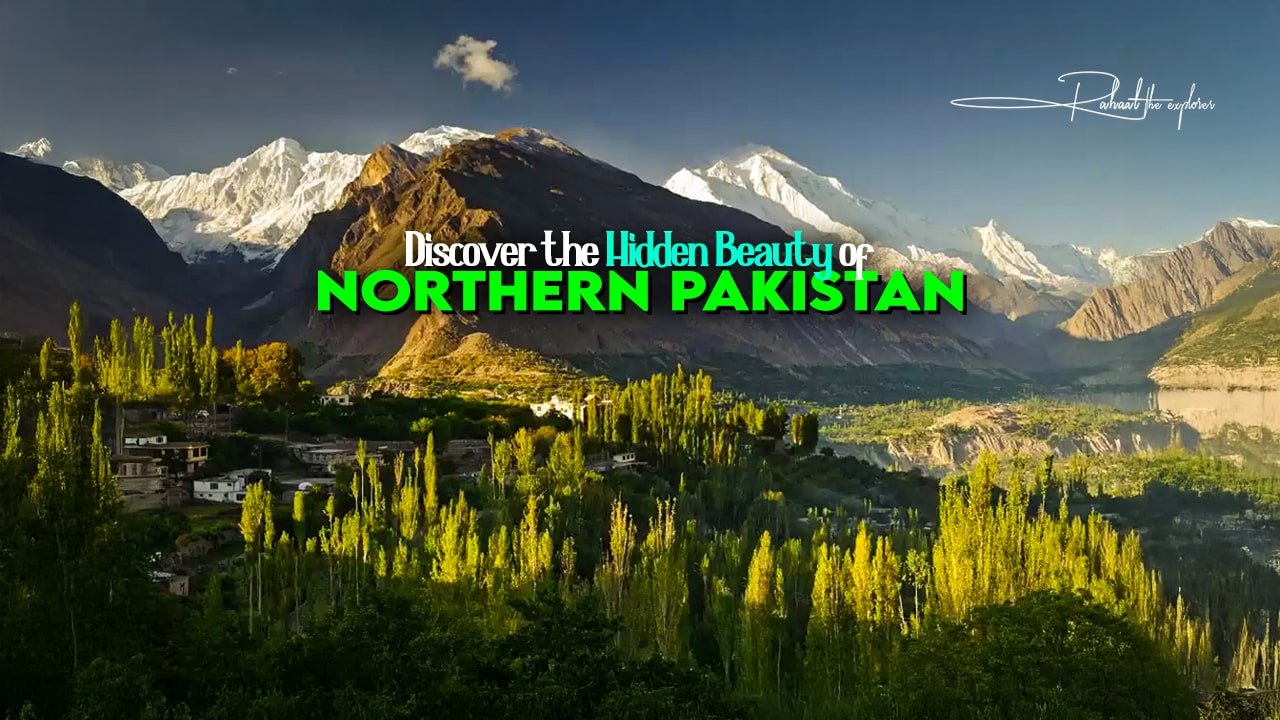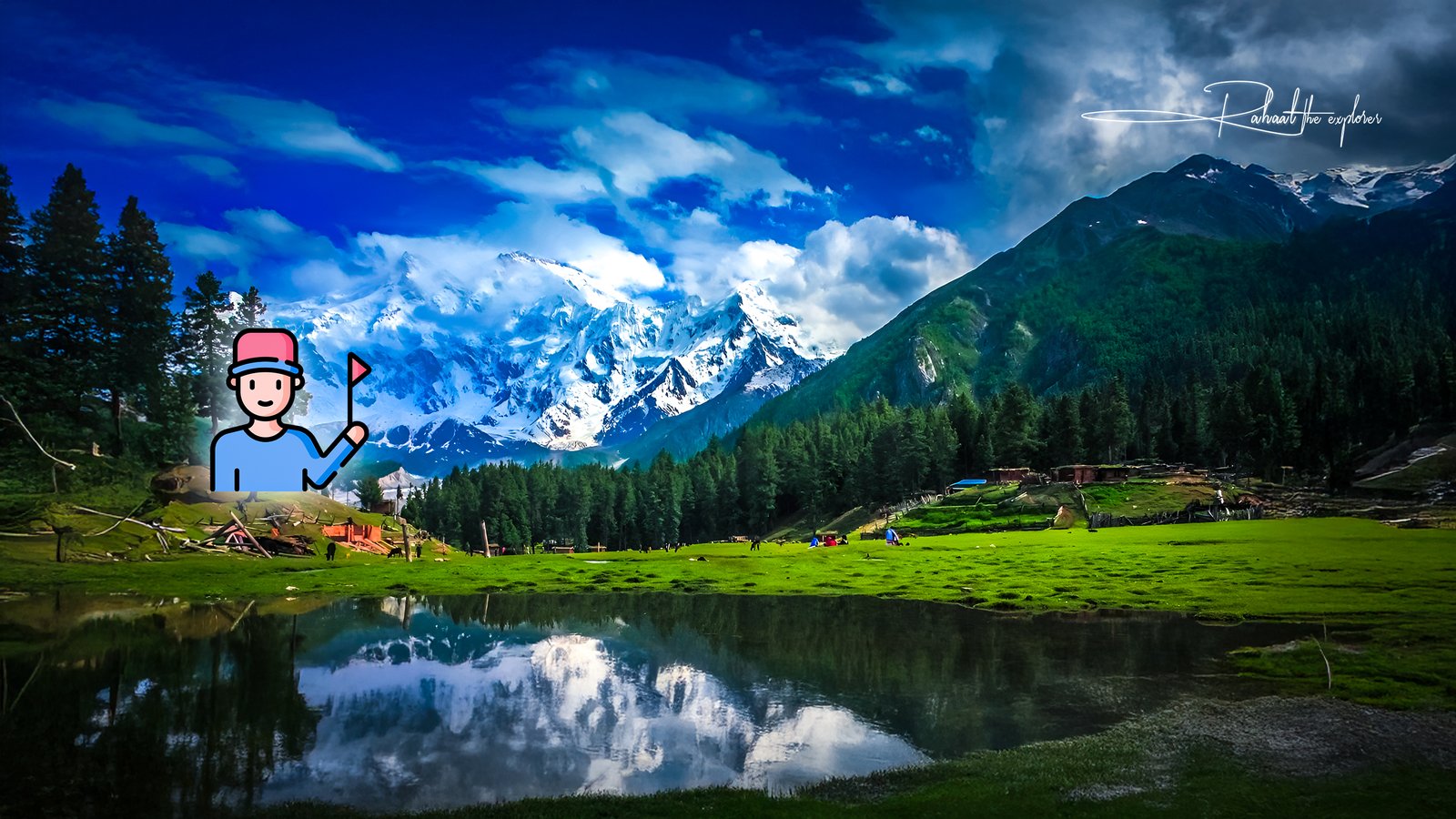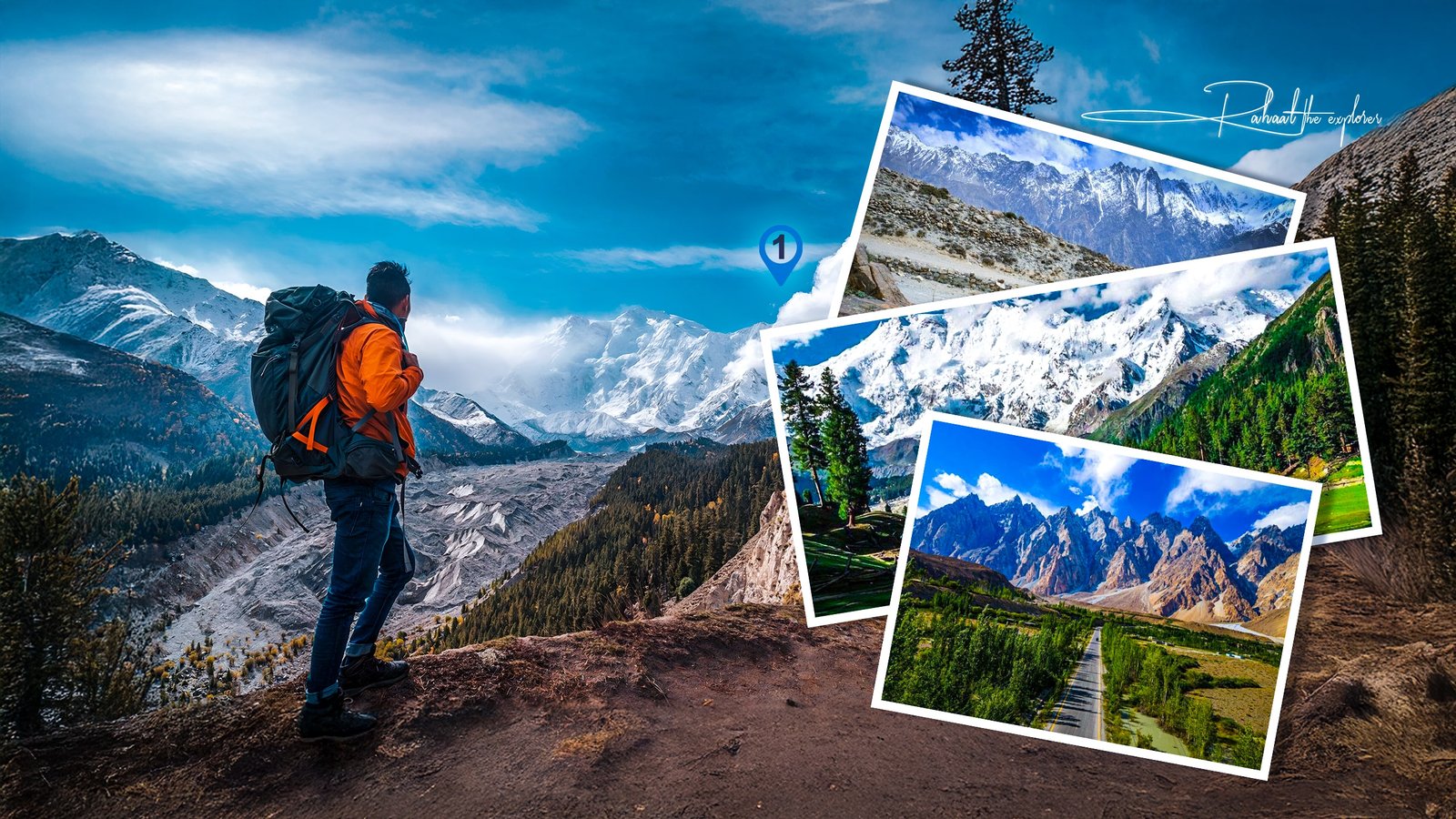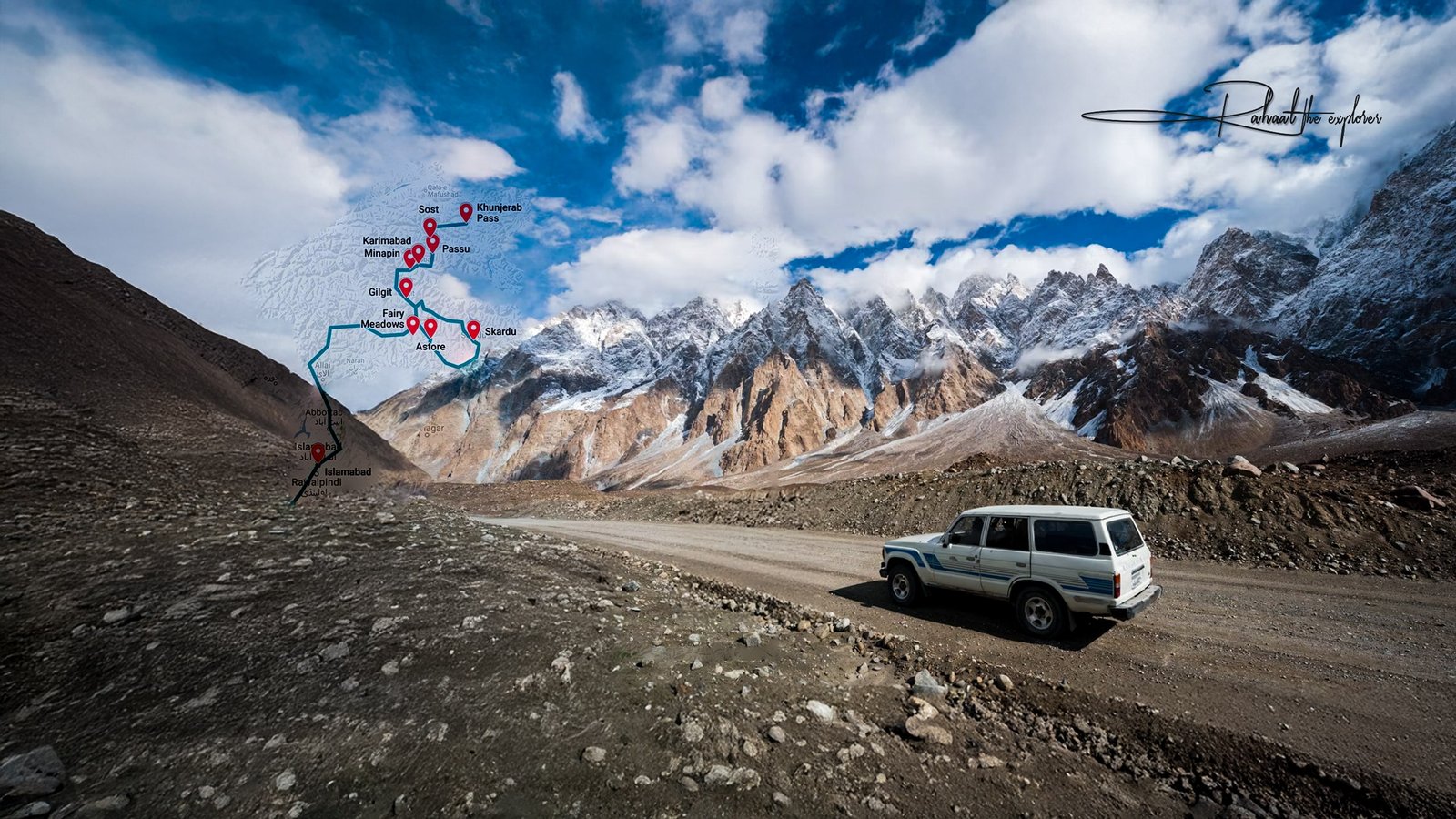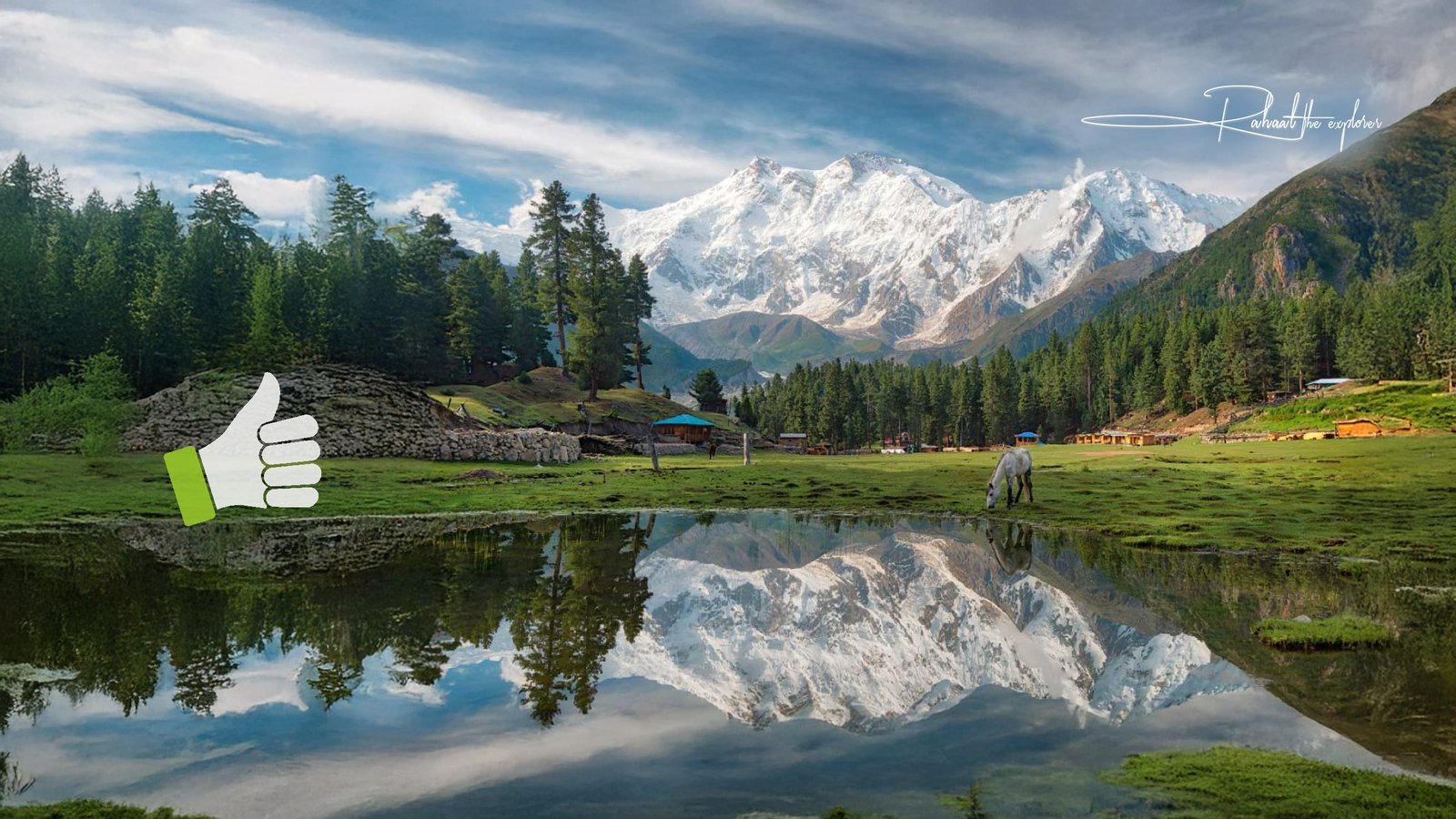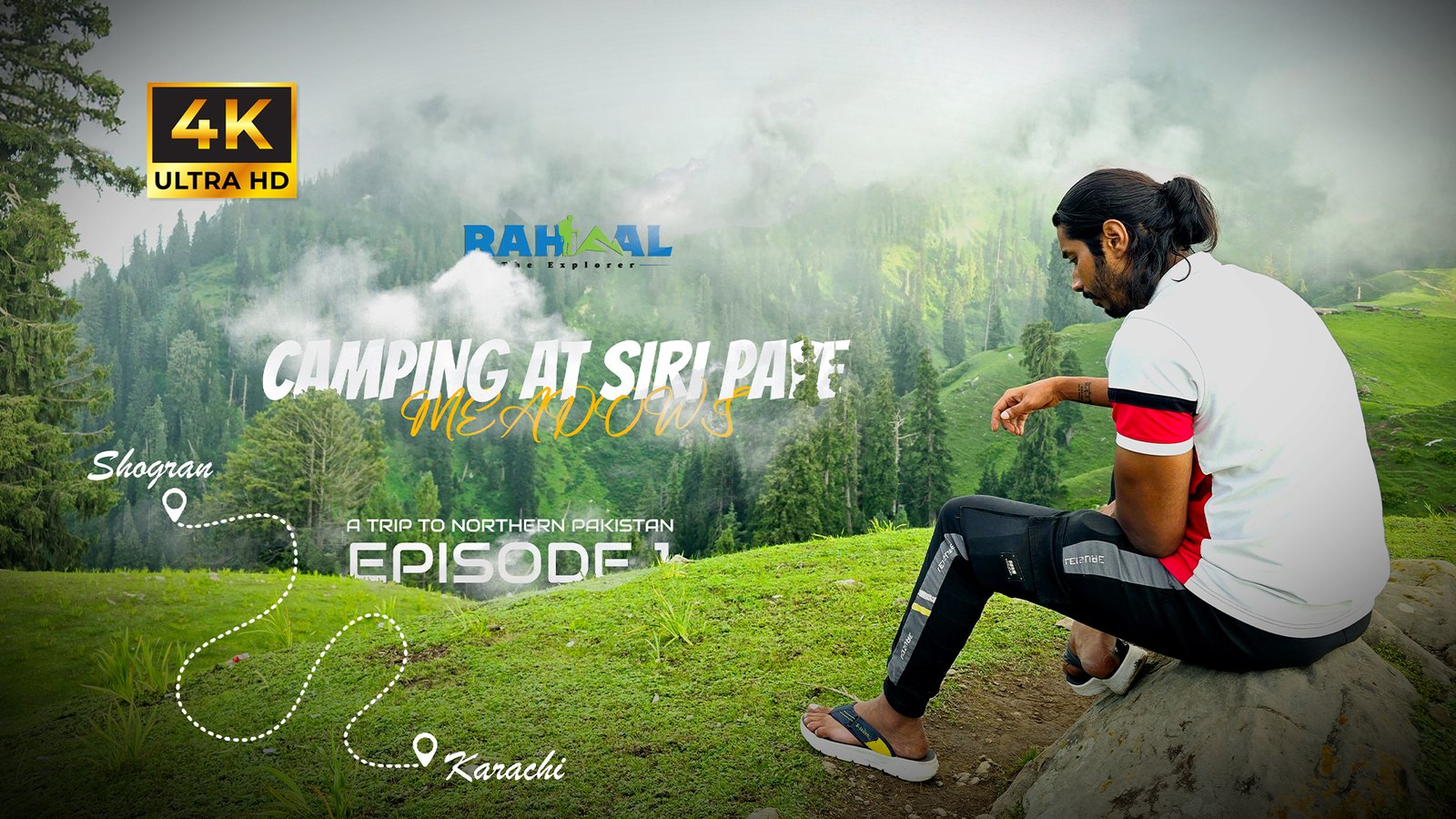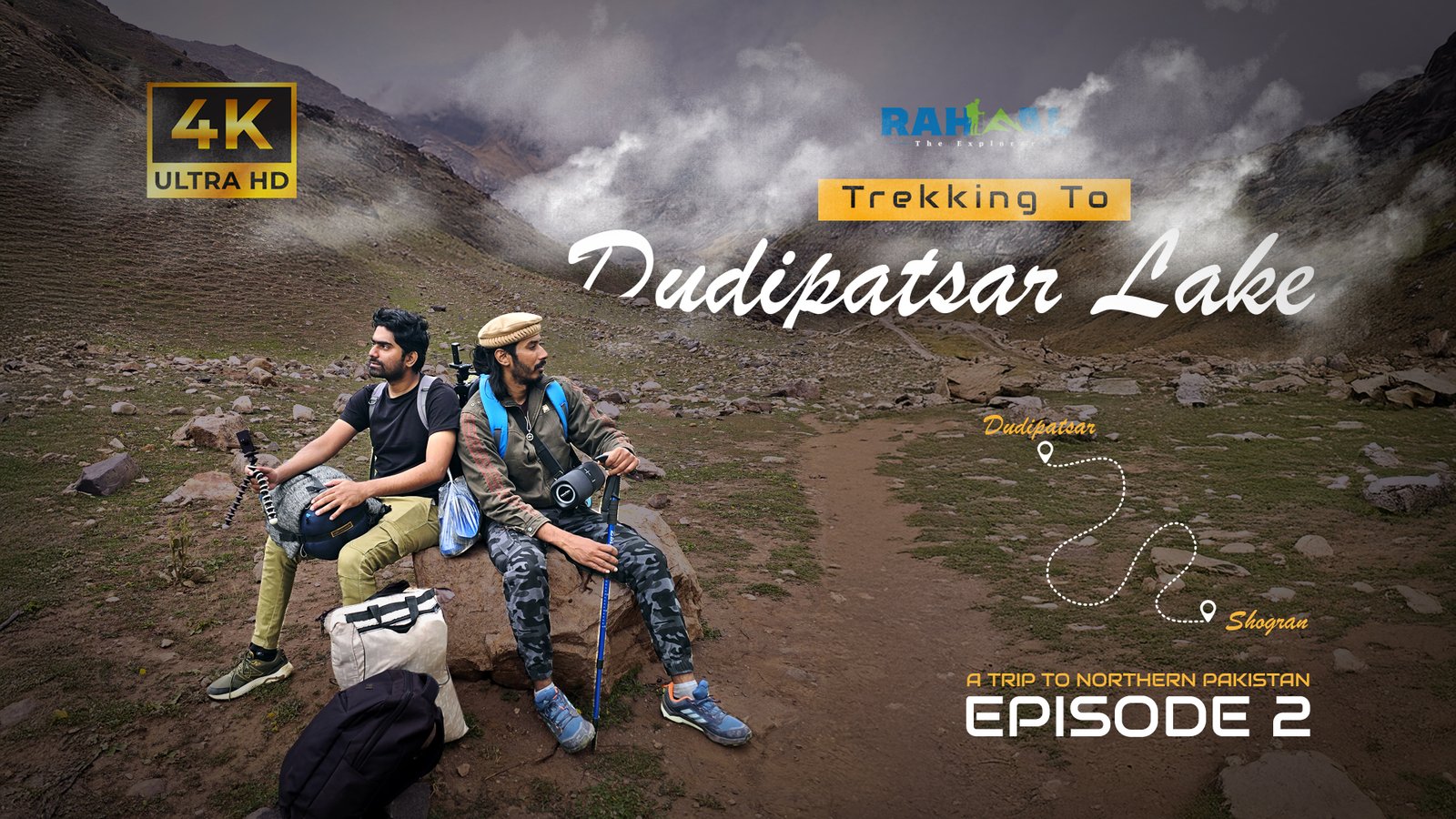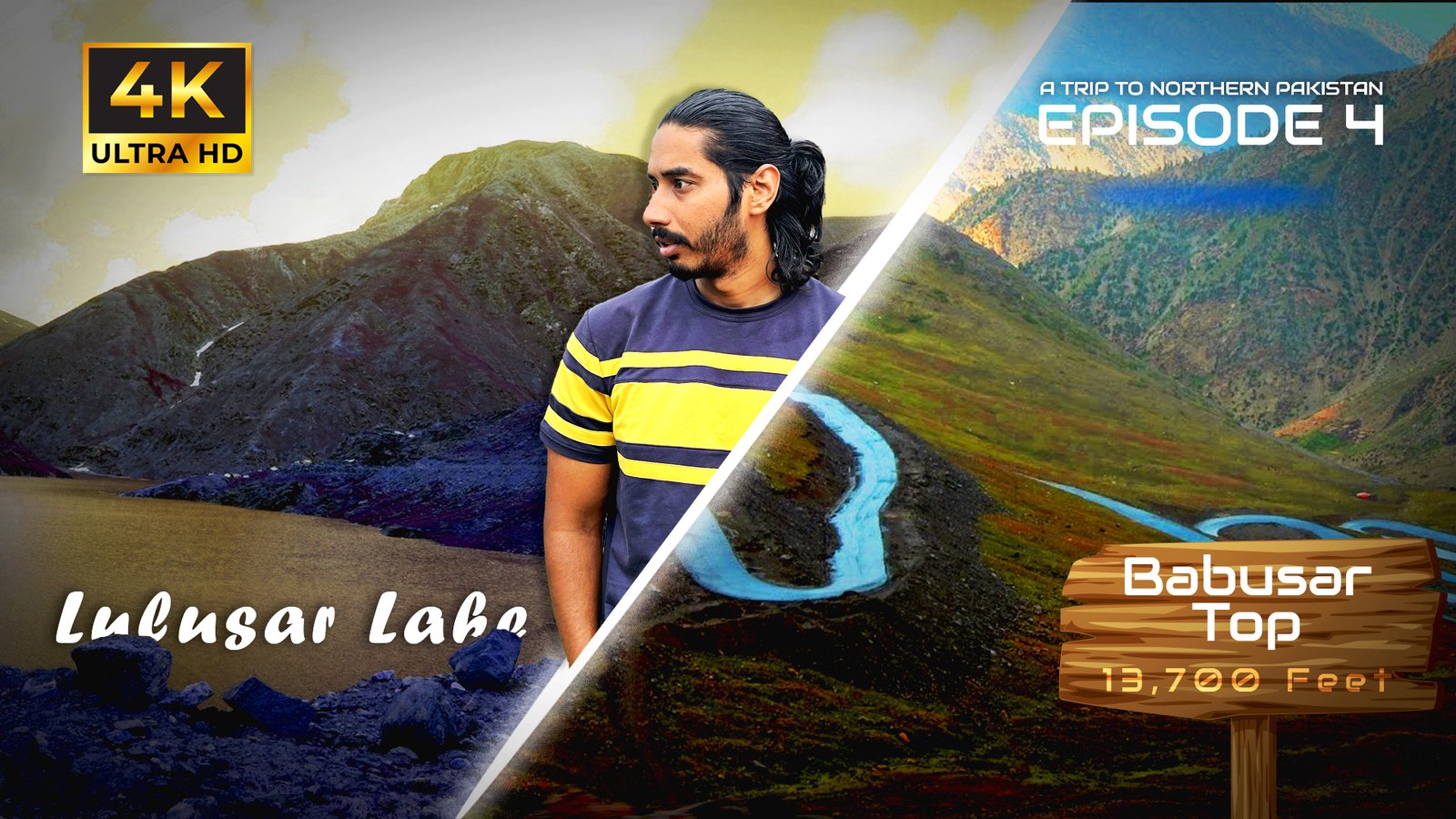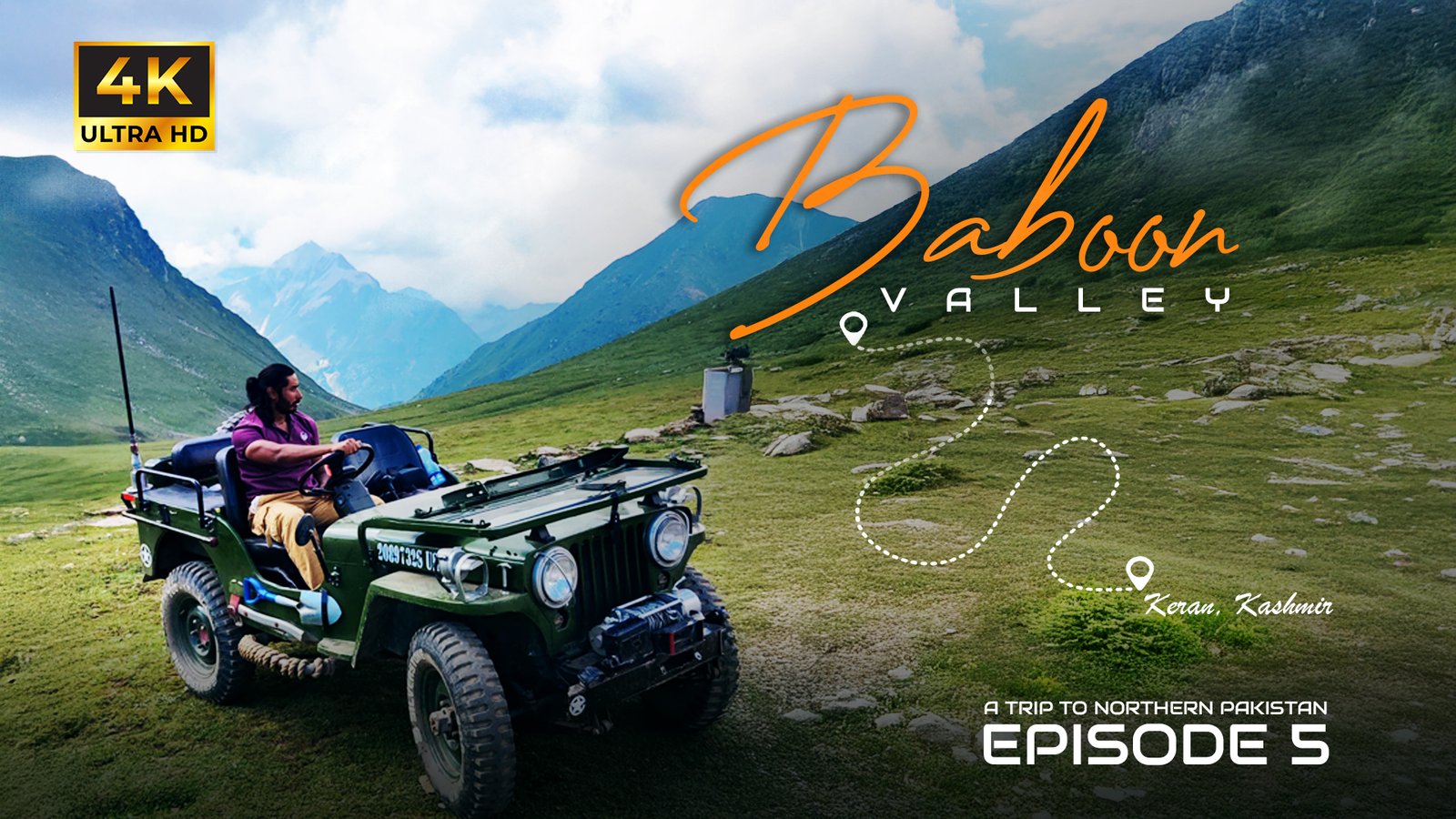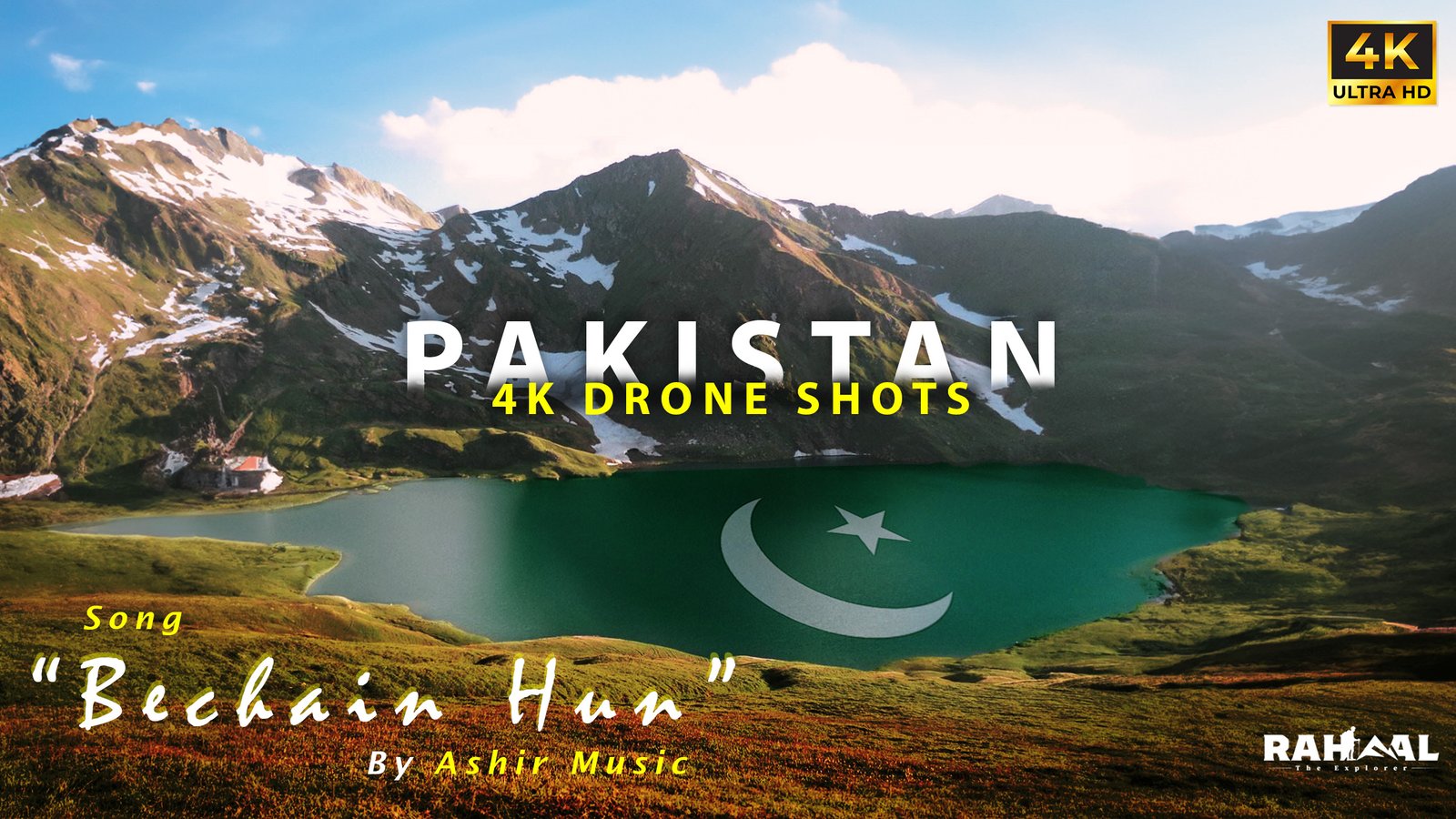Introduction: The Magic of Northern Pakistan
When it comes to breathtaking natural beauty, few places in the world can match Northern Pakistan. From the mighty peaks of the Karakoram Range to the lush green valleys of Hunza, Skardu, and Naran, this region offers a spectacular combination of landscapes, cultures, and experiences that remain etched in every traveler’s heart.
Whether you’re an adventurer, photographer, or nature lover, Northern Pakistan is a paradise waiting to be explored. This comprehensive Northern Pakistan travel guide will help you uncover the region’s hidden gems, top attractions, and essential travel tips for an unforgettable journey.
1. Why Visit Northern Pakistan?
Northern Pakistan is a world of contrasts — snow-covered mountains meet turquoise rivers, ancient forts overlook fertile valleys, and welcoming communities thrive amidst untouched wilderness.
Reasons to Visit:
- Majestic Mountains: Home to five of the world’s fourteen highest peaks, including K2 and Nanga Parbat.
- Rich Cultural Heritage: Ancient Silk Route towns like Hunza and Gilgit preserve centuries of history.
- Adventure Opportunities: Trekking, rafting, paragliding, and camping await thrill-seekers.
- Affordable Travel: Compared to global destinations, Northern Pakistan offers high value at low cost.
The region’s raw beauty and cultural authenticity make it one of the most underrated destinations in Asia.
2. How to Reach Northern Pakistan
By Air:
The fastest route is by air via Islamabad International Airport. From there, domestic flights connect to Gilgit, Skardu, and Chitral (subject to weather conditions).
- Islamabad to Skardu: Approximately 45 minutes
- Islamabad to Gilgit: Around 1 hour
By Road:
For those seeking adventure, traveling by road via the Karakoram Highway (KKH) is an unforgettable experience. Known as the Eighth Wonder of the World, KKH winds through steep cliffs and mountain passes, connecting Pakistan to China’s Xinjiang province.
Popular routes include:
- Islamabad → Abbottabad → Naran → Chilas → Gilgit → Hunza
- Islamabad → Besham → Dasu → Gilgit → Skardu
3. Top Destinations in Northern Pakistan
Let’s explore the top destinations every traveler should include in their Northern Pakistan travel guide itinerary.
A. Hunza Valley – The Land of Eternal Spring
The Hunza Valley, located in Gilgit-Baltistan, is one of the most famous travel spots in Pakistan. Surrounded by snow-capped peaks like Rakaposhi and Ultar Sar, Hunza captivates visitors with its serenity and friendliness.
Must-Visit Places in Hunza:
- Karimabad: The cultural heart of Hunza with historic Baltit Fort and Altit Fort.
- Attabad Lake: A turquoise wonder created after a landslide in 2010, now a popular boating spot.
- Passu Cones: Iconic pointed peaks near Passu village, offering postcard-perfect views.
- Eagle’s Nest Viewpoint: For a panoramic sunset overlooking Hunza Valley.
Best Time to Visit: April to October
B. Skardu – Gateway to the World’s Highest Peaks
Skardu serves as the base camp for expeditions to K2, Broad Peak, and Gasherbrum mountains. It’s a dream come true for adventure lovers and photographers alike.
Top Attractions:
- Shangrila Lake (Lower Kachura Lake): A serene lake surrounded by lush greenery.
- Upper Kachura Lake: Known for crystal-clear water and trout fishing.
- Shigar Fort: A restored 17th-century fortress blending history with hospitality.
- Deosai National Park: The “Land of Giants,” offering a high-altitude plateau with rare wildlife like the Himalayan brown bear.
Best Time to Visit: May to September
C. Fairy Meadows – The Base of Nanga Parbat
A highlight in every Northern Pakistan travel guide, Fairy Meadows is one of the most enchanting spots in the country. Located at the base of Nanga Parbat, the world’s ninth-highest mountain, it offers one of the most breathtaking views in the world.
Travel Tip: Reaching Fairy Meadows involves a thrilling jeep ride from Raikot Bridge, followed by a short hike.
Activities:
- Camping under the stars
- Trekking to Nanga Parbat Base Camp
- Capturing sunrise and sunset views over the mountain
Best Time to Visit: June to August
D. Naran and Kaghan Valleys – Nature’s Wonderland
The Naran-Kaghan region in Khyber Pakhtunkhwa is known for its scenic meadows, lakes, and lush landscapes. It’s one of the most accessible destinations in Northern Pakistan for families and solo travelers.
Top Attractions:
- Lake Saif-ul-Malook: A legendary alpine lake surrounded by myth and beauty.
- Babusar Top: A high mountain pass offering panoramic views.
- Lulusar Lake: The source of the Kunhar River, ideal for photography.
Best Time to Visit: June to September
E. Gilgit City – The Cultural and Administrative Hub
Gilgit serves as the main hub connecting all northern valleys. The city combines modernity with culture, acting as the gateway to Hunza, Skardu, and Chitral.
Highlights:
- Gilgit Bridge: A suspension bridge over the Gilgit River.
- Kargah Buddha: An ancient Buddhist carving from the 8th century.
- Local Bazaars: For traditional handicrafts and gemstones.
F. Chitral and Kalash Valley – A Unique Cultural Experience
Far from mainstream routes, Chitral and Kalash Valleys are among Pakistan’s most culturally distinct areas.
Kalash People:
The Kalash tribe follows ancient traditions, vibrant festivals, and distinct architecture. Visiting during festivals like Chilam Joshi or Uchal provides a once-in-a-lifetime experience.
Scenic Highlights:
- Bumburet and Rumbur Valleys
- Tirich Mir: The highest peak of the Hindu Kush range.
4. Essential Travel Tips for Exploring Northern Pakistan
To make the most of your trip, follow these expert recommendations:
- Best Time to Visit: May to October (summer months offer clearer roads and comfortable weather).
- Clothing: Pack layers — mornings and evenings can be chilly even in summer.
- Local Transport: Jeeps are ideal for mountainous terrains; always hire experienced drivers.
- Currency: Cash is preferred in most areas due to limited ATM access.
- Connectivity: Internet access may be limited in remote valleys, so plan ahead.
- Cultural Respect: Dress modestly and respect local customs. Northern communities are known for their hospitality.
5. Top Travel Activities in Northern Pakistan
This Northern Pakistan travel guide wouldn’t be complete without the best experiences you can enjoy:
- Trekking: Nanga Parbat, Rakaposhi, and Karakoram trails.
- Camping: Fairy Meadows, Rama Lake, and Deosai Plains.
- Photography: Snow-capped peaks, ancient forts, and starry skies.
- Cultural Immersion: Explore local food, languages, and festivals.
- Adventure Sports: Rafting, rock climbing, and paragliding.
6. Local Cuisine – A Taste of Northern Pakistan
Northern Pakistan’s cuisine reflects its rich cultural mix. Don’t miss:
- Chapshuro: The Gilgit-Baltistan version of a meat pie.
- Gyal: Buckwheat pancakes served with apricot oil.
- Dumplings (Mantu): Inspired by Central Asian influences.
- Yak Meat Dishes: Popular in higher altitudes like Skardu.
Local apricots, honey, and herbal teas also make for perfect souvenirs.
7. Responsible and Sustainable Travel
As tourism in Northern Pakistan grows, travelers must help preserve its natural beauty. Follow these sustainable travel tips:
- Avoid littering and use eco-friendly products.
- Support local guesthouses and businesses.
- Respect wildlife habitats.
- Limit single-use plastics.
By traveling responsibly, you contribute to protecting the region’s pristine environment and culture.
8. Sample Itinerary for Northern Pakistan (10 Days)
Day 1–2: Islamabad to Hunza (via Karakoram Highway)
Day 3–4: Explore Karimabad, Attabad Lake, and Passu Cones
Day 5: Drive to Skardu via Gilgit
Day 6–7: Visit Shangrila, Shigar, and Upper Kachura Lake
Day 8: Excursion to Deosai National Park
Day 9: Return to Naran via Babusar Top
Day 10: Visit Saif-ul-Malook Lake and return to Islamabad
This route captures the best highlights covered in this Northern Pakistan travel guide.
9. Safety and Accessibility
Northern Pakistan is generally safe for tourists, but it’s wise to stay updated on local conditions.
- Always register at police check posts where required.
- Hire licensed local guides for remote treks.
- Carry warm clothing and emergency supplies during off-peak seasons.
10. FAQs – Northern Pakistan Travel Guide
1. What is the best time to visit Northern Pakistan?
The ideal travel period is May to October, when roads are open and weather conditions are mild.
2. Is it safe to travel to Northern Pakistan?
Yes. The region is peaceful and welcomes tourists warmly. Always check weather updates before long drives.
3. What are must-visit destinations in Northern Pakistan?
Hunza Valley, Skardu, Fairy Meadows, Naran, and Chitral are among the most scenic and culturally rich areas.
4. How can I travel within Northern Pakistan?
Jeeps and private vehicles are the best options for navigating mountain roads. Domestic flights are available to Gilgit and Skardu.
5. Do I need a special permit to visit Northern Pakistan?
Most areas are open to domestic and international tourists without special permits, though restricted zones may require approval.
Conclusion: Experience the Majesty of Northern Pakistan
Northern Pakistan is more than a destination — it’s a journey into nature’s purest form. From the towering peaks of Karakoram to the cultural richness of Hunza and Kalash, this region embodies the essence of adventure and serenity.
As this Northern Pakistan travel guide shows, every valley and village tells a story, every mountain invites exploration, and every smile reflects genuine warmth.
For travelers seeking authenticity, Rahaal the Explorer encourages you to embrace Northern Pakistan’s raw beauty — responsibly, respectfully, and wholeheartedly.


